Preface
This is a short piece I worked on about the history of climbing on Ship Rock. It was considered to be the last great challenge in North America and has a very vibrant history. This is not meant to be exhaustive and should only serve as a brief introduction. I am by no means attempting to encourage climbing of any route on Ship Rock. At this moment the rock has been off-limits to climbers and has been closed for about 40 years. Please take this for what it is and nothing more. I hope you enjoy it.
The Creation of Rock
![Tse Bit ai]()
As the Navajo Ancestors fled an attacking tribe, they prayed to the Great Spirit for their salvation. Suddenly, the ground lurched beneath their feet and began to rise. As the People saw the enemy tribe recede, they looked down to see that a giant bird bore them on its back. The Bird gracefully soared upward and began to fly toward safer lands. Days passed, and the Bird began to scout the land for a better place for its People to live. Spotting a suitable location in the desert near a river with distant mountains, the great Bird circled thrice and landed. As the People moved out onto the land, the now exhausted Bird folded up its wings to rest. Unfortunately, all was not well. A giant man-eating dragon named Cliff Monster climbed up onto the weakened Bird's back, built a nest and trapped the Bird. The People were furious and immediatley sent their Monster Slayer up to grapple with the beast. A tremendous battle ensued, and in the chaos, the Bird became gravely wounded. In a fury, Monster Slayer cut off Cliff Monster's head and cast it off into the distance. As Cliff Monster's remains were cast out, they turned to stone as they touched Earth. Its head formed Cabezon Peak to the east, and its coagulated blood formed the Great Dike immediately south of Tse' Bit'ai. Deep scratches and grooves were carved down the sides of the Bird as Cliff Monster's blood ran freely during the battle. Sadly, the victory was bittersweet, and a great tragedy soon came upon the People. The Bird had become fatally wounded during the struggle. Rather than let the Bird perish, Monster Slayer used his power to turn the Bird to stone so as to preserve and honor its gift to the People. Now a great rock stands just as Tse' Bit'ai rested: with its wings stretched up toward the heavens.
Legend says that young Navajo would scale the sheer walls of Tse' Bit'ai to gain visions. They eerily described the lofty summit perch where they would survey the People's land.
The Pioneers
Tse' Bit'ai first gained attention from the European settlers as they traveled across the plains and spied a great rock looming above the desert floor from many miles away. As they grew closer, they imagined a large ship sailing gracefully with masts made of stone. They aptly named it Ship Rock, knowing nothing of the Peoples' history. Craning their necks up, the settlers were amazed at the rock's size. Ship Rock is indeed immense and rises a sheer 1,900 feet in a third of a mile. At dawn, its shadow can stretch for miles across the flats. The geology is striking and varies dramatically, giving it a patchwork appearance. The lower walls are often formed by crumbling basalt while the upper ramparts are breccia tuff. The remoteness of Ship Rock also creates a puzzle of perspective. Lines that appear as hand cracks from a distance prove to be 20 foot wide chimneys up close, while towers that appear small are in fact hundreds of feet tall.
![Bent Piece of Iron #1]() Bent Piece of Iron
Bent Piece of Iron
It was many years later before Ship Rock began to attract climbers. By the 1930's, numerous North American ascents had been made, and the list of challenging, unclimbed peaks was growing shorter. After stunning ascents of Canada's Mount Waddington and Wyoming's Devil's Tower in the early 30's, the climbing world turned its attention to Ship Rock. It had been attempted a few times but promptly rejected all parties with little to zero progress gained. Ship Rock gained the notoriety of being the last great challenge in North America, and there was even a rumored reward of $1000. The early pioneers were determined and brave. Robert Ormes and other members of the Colorado Mountain Club made several attempts, and although they pushed higher than anyone else had previously climbed, they could not make a route work. The most memorable of Ormes attempts took place in 1937 and ended above the Black Bowl in the Colorado Col. Faced with a steep basalt rib, he attempted to lead a difficult pitch straight upward toward the summit. Far above his last piece, a foothold broke sending Ormes plummeting toward a single shabby piton placed only two inches into the rock. The force of the 30-foot fall slammed his belayer into the wall and miraculously the piton held (after bending 90 degrees). Shaken, the two retreated and Ormes soon wrote an article entitled, "A Bent Piece of Iron" chronicling the incident. It was published in the Saturday Evening Post and only served to fuel many's desire to summit Ship Rock. The CMC's efforts were taken over by the Sierra Club, and in October 1939, a party of their members assembled at the base. David Brower, John Dryer, Raffi Bedayan and Bestor Robinson all traveled from California for their attempt and proved well resourced with every ounce of beta available on the route. Their gear consisted of many things, but most notably they carried 1,400 feet of rope, 70 pitons, expansion bolts, and drilling equipment.
Working their way up the Black Bowl, the Sierra Club reached the basalt rib where Ormes fell in the Colorado Col. Deciding that the climbing above was too difficult, they instead climbed over the Colorado Col and made a series of rappels down the Rappel Gully to the other side of Ship Rock. Here they found themselves faced with a difficult traverse across a seemingly blank face to reach the easier upper slopes of the Honeycomb Gully. As they carefully traversed the face, they placed two expansion bolts to compensate for the total lack of standard protection opportunities. On the other side, they found themselves in a small cave above the immense walls of the lower Honeycomb Gully. With the cave's overhanging roof blocking upward progress, it took an entire days work to pass the Double Overhang via a short aid pitch. Finally on easier ground, the Sierra Club quickly found themselves at the now famous Horn. After throwing a rope over the feature, they stepped out over the immense west wall (and 1,800 feet of exposure) to climbed directly to the ledge above. One last pitch and some exposed scrambling later they stepped triumphantly onto the summit block. The first party retraced the route back down and celebrated their success. It took a decade before another party reached the summit again.
"I suppose George Mallory, the man who died rather than turn back on Mount Everest, gave as good an explanation as can be found. When asked what he wanted to climb the mountain for, he replied, "Because it is there." Ship Rock was "there", and it was getting to be "there" to a good many people besides ourselves."
- Robert Ormes from a Bent Piece of Iron
A Silent Ship Sailing Across the Desert
After the Sierra Club's success, it took many years for another party to scale it's heights. In 1952, the Colorado Club returned to attempt the climb. The group consisted of five members and this time they were armed with a bolt kit. Four days later and after making many additional bolt placements, the Club was successful. Only weeks later the third ascent occurred and after returning to Earth, they denounced the additional placements. Years later in 1963, Steve Roper and Chuck Pratt climbed Ship Rock and removed every additional piton and bolt. They attempted to leave the route in the state that the original party had left it. They even went on to leave a scathing note in the summit register to all would-be bolters. After the Navajo Nation began tightening regulations in Monument Valley, an accident and death occurred on Ship Rock. Although the members of the rescue team received medals from the president himself, this caused Reservation Police and signs to appear around the base of the rock and the "official" ban was extended. After the ban climbers continued to scale the walls and many instances of police encounters and vandalized automobiles occurred. People argued that the ban did not specifically mention Ship Rock, and that climbing access could be granted by either local grazing rights holders or the Tribal Council itself. Some ascent parties were granted "permission" from various individuals (legal or not) and others merely continued to "poach" the route. From the ban to today, more ascents have been made than in the years when it was legal. The Original Route is rated 5.9 A0 and was included in the "50 Classic Climbs in North America". Close to 500 parties have stood on the summit and new extraordinarily difficult routes have been completed. Even the summit register is considered to be a piece of history, but all modern parties have either fallen on the other side of the law or squarely in a gray area. The future of climbing legally on Ship Rock is still uncertain as access rights are always being discussed. It is certain that ascents made by "poaching" only negatively affect the future of possible legal climbing.
For now, the great rock sits alone in the desert and watches life move pass it. It calls like a siren to climbers and non-climbers alike and can still stir the soul without ever even touching the rock.
"Be still and the Earth will speak to you."
- Navajo proverb
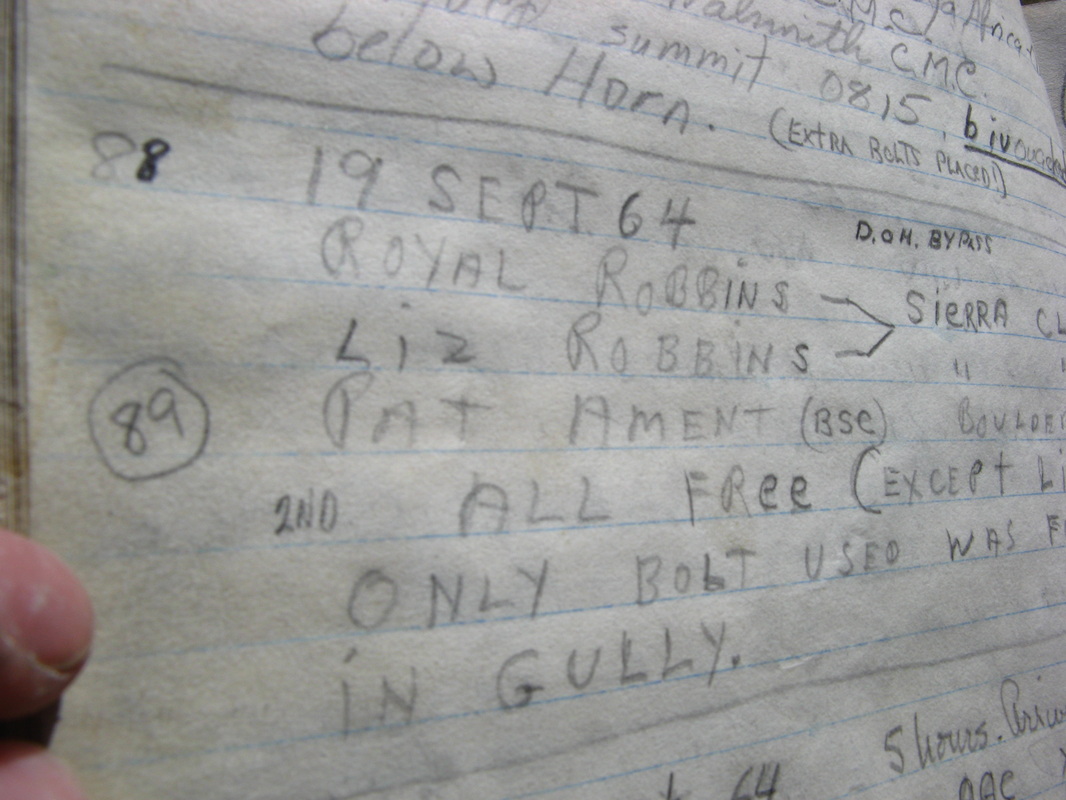


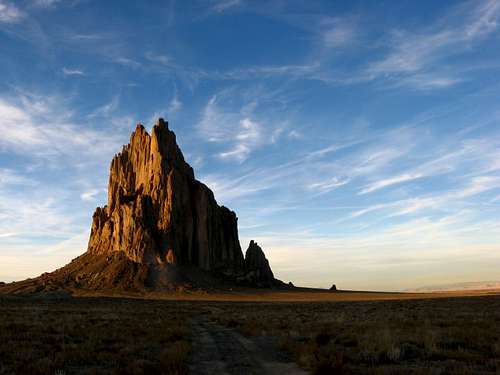

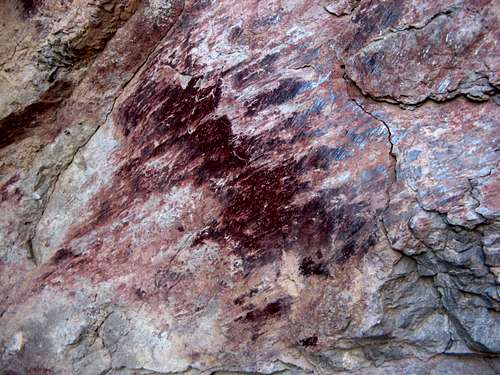
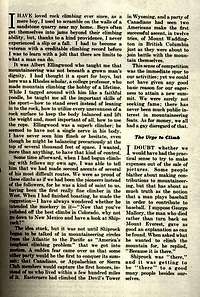

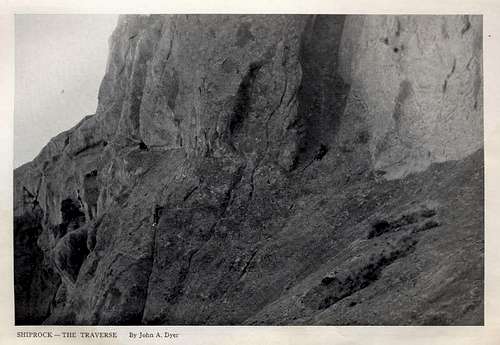











Comments
Post a Comment